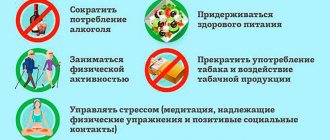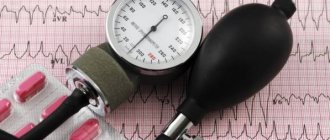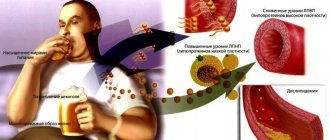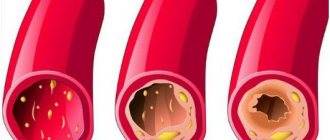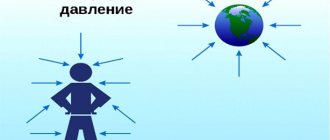What does the average person know about blood pressure? What is certain is that this is one of the vital indicators, and also that its ideal values are 120/80. For a long time, no one thinks about the stability of the numbers on the tonometer, or the importance of monitoring these indicators. And only when some kind of failure or illness occurs, it turns out that deviations in pressure are a serious problem.
Most people are afraid of hypertension: high blood pressure, as is known, threatens crises, heart attacks, and strokes. In a word – vascular accidents of varying severity. But low blood pressure cannot be called a harmless problem. Moreover, what may be a low value for one may be normal for another. What pressure is 100 to 60, normal or low? Let's figure it out.
Pressure and its options
Blood pressure, in simple terms, is the pressure of blood on the walls of large vessels. This is a force that demonstrates the work of the cardiovascular organs in our body, and not only them. Pressure regulation centers are located in the brain, therefore, in some cases, failures in blood pressure (blood pressure) will indicate some pathologies associated with brain structures.
The optimal values of 120/80 are indeed some guideline. But this does not mean that any deviation from these figures is perceived as going beyond the norm.
Important! The optimal blood pressure values today are considered to be 100-119/60-79. Normal pressure is usually designated as -120-129/80-84. There is also the concept of “high norm”, these are borderline values, but they are still not considered as pathology - 130-139/85-89. These figures are presented in WHO recommendations; most countries support this gradation.
What about hypotension? Low blood pressure is recorded when the readings are less than 100 in the upper value (SBP) and less than 60 in the lower value (DBP). So a pressure of 100 over 60 is quite normal if you are not a diagnosed hypertensive patient (then such numbers indicate pressure drops, a sharp decrease). This scenario is truly dangerous.
Types of pressure
Blood pressure (BP) is an important indicator of the health of the body. When measuring, the doctor is interested in two main numbers:
- The top one is systolic, showing the frequency of contraction of the heart muscle. Using it, doctors determine the condition of the main organ and myocardium.
- The lower one is diastolic, it gives information with what force the heart pushes blood out in a small circle after relaxation, helps determine the condition of the blood vessels.
An average of 120 over 70 is considered optimal, but may vary depending on the age, gender and weight of the patient. During the day, the numbers deviate by 10–15 points, which does not affect well-being and physical sensations.
Important! A difference between the upper and lower limits of 30–60 units is considered normal. This means that when increased or decreased, the vessels withstand changes and spasms without requiring serious treatment.
Does blood pressure depend on age?
The medical community is still arguing about this. With age, our body really changes - the same vascular walls weaken, lose their original elasticity. It is logical that blood pressure will change.
Finally, with age, the heart begins to work less smoothly. And if we add here the burden of other diseases that every first person has by retirement age, the change in blood pressure looks like a completely predictable phenomenon.
Today, many doctors use blood pressure gradation according to age:
- 16-19 years old. 110/70-120/70. It is these values that are accepted as the unconditional norm.
- 20-40 years.120/70-130/80. These are already more familiar numbers in terms of understanding the norm.
- 41-60 years old. Up to 140/90 indicators will be considered normal.
- 60+. Up to 150/90 - if the numbers on the tonometer do not rise higher, everything is in order.
What happens, the body is unable to maintain normal blood pressure throughout its life? Of course, there are people with excellent health, genes, and a healthy lifestyle. Even after 60 years, any biometric program that determines biological age will show amazing values.
A person's biological parameters may be younger than his passport age! But these are rare exceptions. Most people age as soon as they reach the end of their fertile age.
To put it very roughly, nature needs us only as long as we can produce offspring. When this period ends, organs and systems “fly”, the body begins to slowly but regress. Modern achievements of science, social psychology, and valeology help a person prolong his youth as long as possible. But certain physiological changes are extremely difficult to stop.
So, WHO has been saying for many years that gradation by age is no longer indicative. Therefore, the optimal blood pressure for people of different ages will be 110/70-130/80.
Blood pressure 100 90 pulse 100 what does this mean
The limit of normal diastolic pressure (lower value) is 90 mmHg. st
Now more and more doctors are paying great attention to the lower a/d numbers. WHO recommends the following classification of hypertension based on diastolic pressure (in mm Hg
Art.):
- I Art. - 90 - 99;
- II Art. - 100 - 109;
- III Art. - 110 or more.
An a/d reading of 100/90 indicates the opposite process to hypertension—hypotension. A decrease in the upper value to 100 for some people is felt in the form of weakness and drowsiness.
However, a small difference between pressure levels can cause palpitations, dizziness and headaches.
Causes of pressure 100/90:
- stress;
- hormonal imbalances in the initial stage, including iodine deficiency with normal levels of thyroid hormones;
- overeating (blood pressure drops after a heavy meal);
- hypovitaminosis;
- taking antihypertensive drugs in the wrong dose;
- vegetative-vascular dystonia;
- chronic fatigue syndrome.
If, when measuring blood pressure, the indicator 100/90 is detected only occasionally, there is no point in worrying. However, such a level, fixed for a long time, especially if you feel unwell and have an increased heart rate (100 and above), requires consultation with a cardiologist. Often the patient is referred to an appointment with a neurologist or endocrinologist to identify disorders in the body at the initial stage.
If the examination does not reveal organic pathology (hypothyroidism, heart disease, etc.), the patient is prescribed the following treatment:
- herbal remedies - ginseng tincture, eleutherococcus extract;
- active physical activity - gymnastics, regular walks or jogging, aerobics;
- proper nutrition and taking multivitamins;
- correction of the rest regime, sufficient sleep.
The use of soothing herbal remedies with motherwort or valerian is acceptable (especially for VSD). However, to achieve a therapeutic effect, the drugs should be taken for at least 2 weeks, and their long-term use leads, albeit slightly, to a decrease in the systolic level.
American pressure scale
This may seem surprising, but in fact, in different countries, doctors focus on different gradations of pressure. One doctor will tell you that 100 over 60 is normal blood pressure. Another will assure that it is slightly lowered. The third will not only calm you down and relieve anxiety, but will also explain that you have ideal indicators. Who to believe?
For example, American cardiologists consider normal blood pressure to range from 91/61 to 119/79. And if they have an appointment with a patient whose blood pressure is 130/80, they will tell him something like this: you don’t have hypertension now, but your blood pressure is still higher than optimal, and your risk of developing a stroke/heart attack is correspondingly higher.
They interpret values of 130/80 as prehypertension. And this is a condition that requires special attention, because many people with it actually subsequently develop true hypertension.
And this theory of American cardiologists is quite convincing. If we simply take into account the physiology of blood vessels and the heart, they show their optimal performance precisely at a pressure not exceeding a level of 120/80. It is believed that the reserve of our cardiovascular system is designed specifically for such blood pressure.
Causes of low blood pressure
Low blood pressure does not always indicate hypotension. There are a number of reasons why indicators may decline and stabilize on their own over time .
Short stature.- Light weight of a person.
- Hormonal changes in adolescence.
- Heredity, when low blood pressure passed from mother to daughter.
- In professional athletes during periods of intense training and dieting.
- For flu, colds, chronic fatigue.
- In case of stress, fatigue or neurosis as a one-time occurrence.
Why does pressure rise/fall?
There are many reasons for this. For example, hypertension does not develop overnight - blood pressure rises slowly. Diseases may be to blame for this, but more often everything is much simpler: our lifestyle is detrimental to one of the main systems of the body. Physical inactivity, poor nutrition, obesity, stress, bad habits - all this inevitably affects blood pressure.
Blood pressure also decreases for various reasons. If a hypertensive person’s blood pressure is 100 over 60, there is nothing to be happy about; most likely, it has dropped too sharply. This happens when a new medicine is prescribed, when the very first dose gives a similar effect.
A sharp decrease in blood pressure does not bring anything good: on the contrary, it only increases the risk of vascular accidents. And the hypertensive person himself does not feel healthy and vigorous at all in this state. When his blood pressure is 100 over 60, he has a headache, feels very weak, lethargic, and apathetic.
Attention! If you are hypertensive and your blood pressure has dropped so much, rush to see a doctor. This can be dangerous, all risks must be eliminated. Therapy adjustments may be required.
General recommendations
Additional means that increase blood pressure are maintaining a healthy lifestyle - you should not smoke or drink alcohol.
Sleep at least 8-9 hours a day. Good sleep contributes to proper rest of the whole body. It will also be useful to take a short rest for half an hour once a day to restore moral and physical strength.
To avoid problems with blood pressure, it is important to follow a sleep schedule.
To normalize blood pressure, it is worth reviewing your diet. Balance your menu with fortified foods.
Morning walks in the fresh air tone the body well. Avoid heavy physical overload and emotional stress.
To control blood pressure, measure your blood pressure with a tonometer at least once a day.
Is your pulse normal or fast?
This is also important. As is known, the normal pulse values lie in the range of 60-90 beats per minute. If, for example, you are a person with normal blood pressure, without diagnosed cardiovascular pathologies, and after taking a measurement, you recorded a blood pressure of 100 over 60 and a pulse of 60, this is quite acceptable. But if your pulse “jumps,” you most likely need to seek help.
Again, it is very important at what point you take the measurement. If you just climbed the stairs, went for a run, washed all the windows in the house, etc., both blood pressure and pulse may deviate from the norm for a short time.
But it is also worth noting that low blood pressure and a rapid pulse can be signs of a state of shock. Shock is an unfavorable reaction of the body to a situation in which its tissues suffer from oxygen deficiency and lack of nutrients. The body needs them so that the brain, heart and blood vessels work flawlessly.
If the pulse increases and rises to values of 140 or higher, the person needs emergency help. Such situations, alas, are often observed in post-traumatic and anaphylactic shock.
Blood pressure 100/60 – normal or pathological
Blood pressure 100/60 is the maximum acceptable lower normal value. For most people, this is the optimal pressure at which a person feels comfortable, does not make any complaints, and remains functional.
However, in some cases, such systolic and diastolic indicators indicate the presence of the disease.
Most often, the tonometer records numbers of 100/60 in slender girls or with orthostatic hypotension. This condition appears in the morning when abruptly getting out of bed, manifests itself as dizziness, flashing spots before the eyes, and threatens loss of balance and injury. Orthostaticity is also impaired in the postoperative period or after taking a number of medications.
Causes of hypotension
As you can see, 100 to 60 is not always hypotension. But if your blood pressure has been higher for a long time and has never dropped to such numbers, you absolutely need to get examined. This is an important note: you should compare the current values on the tonometer with constant ones.
What can cause hypotension:
- Peripheral nerve damage associated with diabetes;
- Diseases of the brain - spinal and brain;
- Certain endocrine disruptions of various etiologies;
- Vitamin deficiency due to various reasons;
- Injuries complicated by internal bleeding;
- Drug overdose;
- Allergic reaction (severe), allergic shock;
- Dehydration.
Of course, the values of 100/60 are not always associated with such serious reasons. The main point is to know from what initial stable indicator the pressure decreased. If it was 110-120/70-80, then this is a slight decrease.
Perhaps it is a matter of elementary fatigue or a pre-morbid state. Another question is that if such blood pressure has been observed for a long time, this is not an episodic decrease.
Why does the cause problem occur?
Blood pressure of 105 over 65 can be explained by various physiological and pathological factors that need to be eliminated as soon as possible. Often this is working blood pressure in a teenager, and low levels are also typical for people who are professionally involved in sports. Pressure 100/60 mm Hg. Art. can be observed throughout the morning, and by lunchtime it stabilizes on its own. Reduced numbers on the tonometer are often recorded in women who are under 40 years old. All such conditions do not require concern if the patient feels normal. When low blood pressure is accompanied by unpleasant symptoms, this indicates the following disorders:
- unbalanced diet;
- insufficiently active lifestyle;
- bearing a child;
- allergies with severe manifestations, in which the pulse may be 80 beats per minute;
- lack of fluid in the body;
- internal or external bleeding with excessive blood loss;
- long-term drug therapy, in which the patient takes certain medications, as a result of which the pressure is 108 over 64.
Return to contents
Features during pregnancy
With such blood pressure levels, the expectant mother may suffer from headaches.
Blood pressure levels of 100 over 85 are often observed in the fairer sex during pregnancy. Blood pressure can often fluctuate during pregnancy due to changes in the cardiovascular and nervous system. As soon as a woman becomes worried, her pulse is 90 beats in 60 seconds, while she regularly has a headache, dizziness and other unpleasant symptoms. In this case, a pressure of 110 over 60 during pregnancy can pose a threat to the expectant mother and fetus. This condition can be affected by prolonged toxicosis, as a result of which long-lasting vomiting causes concern, causing a lack of fluid in the body. In case of such a phenomenon, it is necessary to urgently consult your doctor, since there is a high risk of impaired blood supply to the fetus without a timely increase in pressure.
Return to contents
What is it associated with in childhood?
Often, a pressure of 100 over 60 in children and a pulse of 100 beats per minute are the norm, provided that the baby feels comfortable. In adolescence, blood pressure surges from a sharp decrease to an increase are often recorded, while the child complains of dizziness, weakness throughout the body, and attacks of nausea. In such a situation, you should not give medications at your own discretion to stabilize the pressure, as this may worsen the problem. Contact a cardiologist who will conduct an examination and prescribe treatment if necessary.
Hypotonic symptoms
Blood pressure is 100 over 60, what should I do? Listen to your condition. Try to evaluate it subjectively. The neurological apparatus does not react to hypotension with dizziness, tinnitus, fainting and presyncope, as well as possible disturbances in the functioning of the brain. The respiratory system also gives a reaction - most often it is difficulty breathing, the inability to take a full breath, etc.
Systemic symptoms of low blood pressure:
- Headache;
- Severe drowsiness;
- Fatigue and lethargy, apathetic state.
From the cardiovascular system, a person may feel a strong heartbeat. Muscle weakness may also be felt, to the point that it is difficult to stand on your feet for a long time or perform simple actions.
But the gastrointestinal tract may respond to a decrease in blood pressure by causing nausea. It rarely comes to vomiting, but nevertheless it happens.
Causes of blood pressure 100 over 60
The mechanisms of development of the essential (primary) form of the disease are not fully understood. It is associated with disturbances in the processes of regulation of blood circulation on the part of the nervous and humoral systems.
Secondary hypotension may be a consequence of disturbances in the functioning of the pituitary gland, thyroid gland (thyrotoxicosis), and adrenal glands. Concerns patients suffering from heart defects, pericarditis, infections, intoxications, allergies, dehydration, and brain tumors. The condition occurs after taking anesthetics, diuretics, antihypertensives, anti-anxiety compounds, and antidepressants.
The acute form of hypotension is associated with a sharp decrease in vascular tone, which results in brain hypoxia and disruption of the functioning of the most important organs. It can be caused by severe poisoning with cyanide, nitroglycerin, captopril, nifediline, narcotic substances, alcohol, dehydration, blood loss, acute infection and sepsis. It is always due to an obvious reason, which doctors take into account when providing assistance.
Doctors pay less attention to the chronic form of hypotension compared to high blood pressure, although in elderly patients it can lead to ischemic stroke, and in young patients to decreased performance and a deterioration in quality of life. A person with this diagnosis does not tolerate stuffiness, cold, and is prone to fainting. Complains of pain in the heart, fatigue after waking up, anxiety, weakness.
With normal heart rate
Causes of physiological hypotension: adaptation mechanisms characteristic of highlanders, the population of the Arctic Circle, tropical regions, as well as overtraining in athletes who do not feel any discomfort due to low blood pressure.
With increased heart rate
The condition is a consequence of hypovolemia, when the volume of circulating blood decreases. Causes:
- Dehydration of the body due to vomiting, diarrhea, increased sweating, diabetes, taking diuretics, alcohol.
- Blood loss as a result of injury, as well as malignant neoplasms of the intestine, hemophilia, ulcers.
- The release of plasma into the body cavities and intercellular space, provoked by severe burns, kidney and liver diseases, and a decrease in the level of proteins in the blood.
- Anaphylaxis.
- Panic attacks.
- Anemia.
- Hypoglycemia.
In these conditions, compensatory mechanisms are activated that provide oxygen to the most important organs, as a result of which tachycardia develops.
An increased heart rate sometimes leads to hypotension. The heart pumps out less and less blood, which lowers blood pressure. It is rare, occurs suddenly due to ischemic disease, pathologies in the myocardial conduction system. Tachycardia due to physical exertion, pain, high temperature, or fear does not cause a decrease in blood pressure.
Low blood pressure in a pregnant woman
Blood pressure of 100 over 60 during pregnancy is not that uncommon. We can say that the reason for this phenomenon lies in hormonal changes. Moreover, reduced blood pressure is more often recorded in the morning, after sleep. This pathology can be explained by toxicosis, which is rarely avoided in the first trimester of pregnancy. Nausea and vomiting lead to dehydration of the body, and therefore blood pressure decreases.
And if the patient has chronic hypotension, then it provokes a decrease in blood pressure throughout the entire pregnancy. And this is a reason to monitor such an important indicator: serious hypotension will always be associated with the risk of miscarriage or other pregnancy pathologies.
Secondary factors contributing to a decrease in blood pressure during gestation:
- Increased progesterone production;
- High loads during complicated pregnancy (for example, twins or a large fetus for an asthenic patient);
- Iron deficiency anemia, which is shown by laboratory tests;
- Individual characteristics of meteodependence or meteosensitivity;
- Persistent nervous tension associated with fear of childbirth.
Each case is considered separately. It is also very important at what weight a woman is registered for pregnancy. For example, a twenty-year-old girl, weighing 50 kg and tall, comes to the doctor. Usually at this age and with such data, her constant pressure will be about 100-110/60-70. This blood pressure is normal for such anthropometric data.
But if in the first weeks of pregnancy a young patient suffers from toxicosis with nausea and vomiting to the point of bile, if her appetite has worsened, if she often feels faint, the pressure may drop even lower.
Your doctor will give you recommendations on what to do and how to bring your blood pressure back to normal. You also need to protect yourself from stress, physical and intellectual fatigue. You will need rest, a certain daily routine, a balanced and fortified diet, good sleep and rest. Only such measures can significantly improve the situation.
Very often, low blood pressure bothers a pregnant woman so much that she is given a sick leave certificate. And this is correct - in such a state it is impossible to lead a normal life, you need to rest more and reduce your activity.
How to normalize blood pressure
After the diagnosis, the doctor selects a treatment method, which includes: taking medications, proper nutrition and daily routine, special exercises based on a complex of physical therapy. If a problem occurs in a pregnant woman, any measures are carried out only in a hospital under the strict supervision of a therapist.
If an attack occurs, you must call a doctor and provide assistance to the patient:
- lay on a sofa or bed, ventilate the room;
- apply a towel soaked in hot water to your head;
- offer a cup of sweet tea.
If the attack is caused by dehydration, the patient should drink clean water in small sips and put an ice cube or lemon in his mouth. If you lose strength due to a strict diet, you can offer a little dark chocolate without additives or a cup of coffee with sugar.
Drug treatment
If the blood pressure is diagnosed as 100 over 60, what to do and take, says the specialist after the examination:
- For headaches - Citramon, Spazmalgon or Spazgan.
- If necessary, stimulation of the nervous system - Piracitam, Cerebrolysin.
- To normalize adrenaline levels - Metazon, Fethanol, Noradrenaline.
- For painful vascular spasms - No-Shpa, Drotaverine.
Important! In cases of congenital vascular anomalies, aneurysm or internal bleeding, surgical intervention is required. Otherwise, taking medications will only reduce the symptoms, but will not completely solve the problem.
Folk recipes
Drug therapy can be combined with non-traditional therapy. Some plants contain valuable amino acids, tannins, and minerals that slightly raise blood pressure and normalize the functioning of blood vessels and the heart. The most effective tinctures are made from the following extracts:
- Eleutherococcus;
- ginseng root;
- Chinese lemongrass.
For stress and depression, they can be mixed with pharmaceutical mint, peony extract, and St. John's wort. On the recommendation of a doctor, it is recommended to take a herbal mixture based on nettle, lungwort, birch or strawberry leaves for 2–3 weeks. With severe tachycardia against the background of low blood pressure, immortelle tea mixed with rose hips helps.
Nutrition for hypotension
If the pressure drops to 100 to 60, doctors recommend giving up exhausting diets and switching to a nutritious, balanced diet. To improve your performance, you must include the following products in your menu:
- spices (bay leaf, oregano, basil, mixture of peppers);
- fish, seafood;
- fatty cheeses;
- dairy products;
- citrus;
- freshly squeezed vegetable juices;
- nuts;
- cocoa.
Sprouted wheat and oats help replenish the supply of vitamins and minerals. They are taken instead of breakfast, mixed with kefir or cereals, added to cottage cheese and juices. Smoothies made from beet pulp, carrots, and celery root are no less effective.
Physical activity
Simple physical exercises help strengthen the circulatory system and increase vascular tone. A physical therapy therapist helps to create a complex based on the general condition and age of the patient. If you wish, you can practice yoga, dancing or swimming, buy an exercise bike, or a treadmill. If you don’t have personal time, walking at a fast pace or light jogging 2-3 times a week is enough.
With low blood pressure of 100 over 60, patients complain of weakness, which interferes with physical activity. Therefore, before starting a workout, doctors recommend drinking a cup of coffee or tea with sugar, and having a snack with a carbohydrate product: fruit or vegetable salad, a handful of nuts, dried fruits. Exercises should be performed at a calm pace without jerking or forceful loading.
Hypertension and sudden drop in blood pressure
We have already said that this phenomenon is dangerous. Now it’s worth saying more about this. The reasons for a sharp decrease in blood pressure in a hypertensive patient can be a sign of serious failures and disorders.
Such changes in blood pressure can occur due to:
- Blood loss, the volume of which is more than 800 ml;
- Serious disruptions in the functioning of the heart and blood vessels;
- Developing vegetative-vascular dystonia;
- Presence of pulmonary edema.
If you have hypertension and your blood pressure drops to 100/60, in most cases you should call an ambulance. No matter how scary it may sound, the risk of vascular accidents is high, including cardiac arrest. There is no need to panic, take all the pills in a row - under no circumstances, but you should definitely call an ambulance.
With a sharp drop in blood pressure, a hypertensive patient often gets confused in words, may not recognize loved ones, he sweats a lot, his gait is uneven, his legs feel like they are made of cotton. His skin turns pale, his lips and nails turn blue. The patient himself may complain of cold feet and hands, numbness of the limbs.
Before the ambulance arrives, the patient must be laid down by placing a cushion or pillow under his feet. Release your chest and unbutton all the buttons. Open the window. Give him some warm sweet tea, but don't force him. Talk to him calmly, without panic; you don’t need to cause anxiety in the patient with your frightened eyes, aggravating his condition.
Causes
For some, a minimal gap between the upper and lower blood pressure readings is an extremely dangerous phenomenon that requires immediate medical attention, while for others it is the norm.
Norm
Cases when there is no cause for concern if your health remains satisfactory:
- professional sports;
- physically hard work;
- increased production of adrenaline, which causes vasoconstriction;
- insufficient width of vascular lumens;
- small lumen of arteries.
Dangerous moments
Dangerous changes in blood pressure in most cases are episodic in nature and are provoked by the following reasons:
- severe emotional experience leading to overstrain;
- lack of iodine in the body;
- unfavorable heredity leading to poor vascular condition;
- severe vitamin deficiency, especially in spring;
- obesity;
- drinking large amounts of alcohol;
- severe hormonal imbalances in the body;
- unbalanced diet, which includes various chemical compounds and excess animal fats;
- severe stress;
- excessive salt intake;
- lack of physical activity;
- severe chronic fatigue.
Concomitant diseases
Also, similar changes in blood pressure are often accompanied by the following diseases:
- severe liver damage;
- abnormalities in the structure or development of the thyroid gland;
- serious malfunctions of the kidneys, leading to fluid stagnation;
- tumor diseases;
- heart pathologies;
- vegetative-vascular dystonia.
In such cases, as a rule, the attending physician tells you how to behave during pressure surges and explains how dangerous they can be.
Enter your pressure
130 /100
Search in progress Not found
How can you raise your blood pressure?
If you are hypertensive and your blood pressure has dropped sharply, do not do anything on your own - call an ambulance. But if your blood pressure is normal, but at some point it dropped a few units and you are not feeling your best, then some self-help will not be dangerous. Thus, coffee, strong black tea with a slice of lemon, nuts or dark chocolate are traditionally considered to increase blood pressure.
Often, hypotensive patients are “saved” by rosehip tea or a decoction of red rowan leaves. An infusion of nettle and chicory can also help. Try to coordinate even folk recipes with your doctor - they are not for everyone and they are not always harmless.
What blood pressure is considered normal during pregnancy?
Every time a pregnant woman comes for a consultation with a gynecologist, her blood pressure is measured. This happens once every two to three weeks, but ideally a pregnant woman’s blood pressure should be measured daily. What is it for? In order to monitor your health and, if necessary, take the necessary measures, because pressure changes during pregnancy can be dangerous for both the mother and her child.
What is normal?
It is generally accepted that blood pressure during pregnancy should be no lower than 90/60 and no higher than 140/90.
As we already said, you need to check it every day. To do this, you need to purchase a modern electronic tonometer. Such a device automatically measures pulse and blood pressure, memorizing the indicators, which makes it possible to compare them. We do not recommend buying old-style devices, because without experience, you may measure pressure incorrectly.
Third trimester and increased blood pressure
At this time, it is most likely that the blood pressure in the vessels will become higher. But at the time of birth, this indicator should approach prenatal values. At 32-38 weeks, a woman’s cardiovascular system experiences the greatest load - the heart rate quickens, blood output increases by 40, or even 50%, and the pulse increases.
Why are both doctors and pregnant women themselves so afraid of high blood pressure values? Associated with them is the concept of “gestosis,” a pathology that can only affect pregnant women. One of the signs of this dangerous condition is an increase in blood pressure. This is a truly insidious disease; it entails changes in the functioning of various organs - the circulatory and cardiovascular systems are especially affected.
Preeclampsia is a threat to a healthy pregnancy:
- Its presence can be indicated by swelling in the legs and hands - they arise due to the smallest vascular openings that appear as a result of the production of special substances by the placenta;
- Plasma protein and liquid enter these small holes, and although the edema itself does not pose a threat to the mother, placental edema will lead to a serious lack of oxygen for the baby.
But even if gestosis is not detected, and the pressure is higher than normal, this can still lead to vascular changes. They will definitely affect the child; there is a high risk of developing fetoplacental insufficiency. With maternal hypertension, the fetus develops hypoxia and the baby’s development slows down. The child may be born with pathologies and may be premature. Neurological disorders cannot be ruled out due to the same high blood pressure in the mother during pregnancy.






